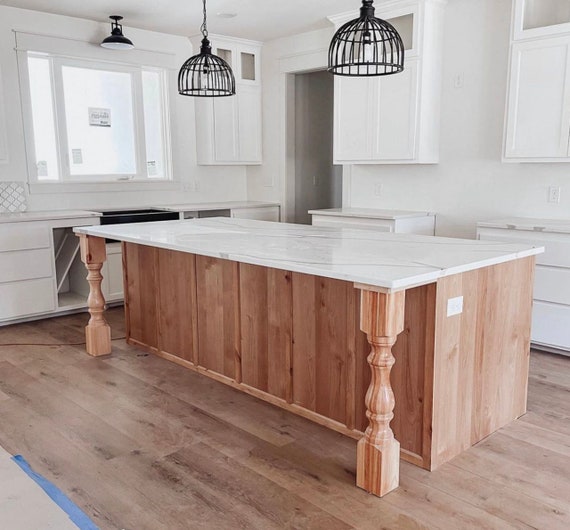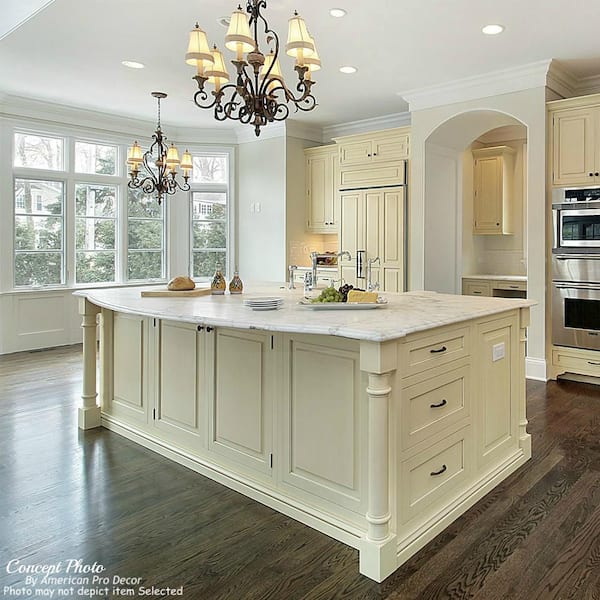An Overview to Selecting the Perfect Legs For Cooking Area Island for Your Home
Selecting the ideal legs for your kitchen area island is a nuanced choice that impacts both the performance and aesthetic appeal of this central area. Variables such as height, materials, and design play a critical role in harmonizing your island with the total kitchen design. Furthermore, recognizing the importance of stability and upkeep can considerably affect your selection. As you consider these aspects, it ends up being noticeable that the appropriate legs can transform not only the look of your kitchen area however additionally its usability for years to come. What certain attributes should you focus on in this option procedure?

Comprehending Kitchen Island Legs
When picking legs for a kitchen island, it's important to understand their practical and visual functions in the total style. The legs offer as an important support system, making certain stability and longevity for the island, which commonly operates as a workspace, eating area, or gathering place. As a result, the option of product and construction strategy should be durable adequate to stand up to daily use and possible wear.
Along with their structural obligations, legs add significantly to the island's aesthetic allure. They can boost the kitchen's style, whether via typical, modern, or diverse designs. The height and proportion of the legs are likewise important considerations; they need to integrate with the island's kitchen counter elevation while ensuring comfortable seating for those using the area.
Additionally, the leg style can affect the total circulation of the kitchen area. Open, ventilated leg designs can develop a feeling of lightness, while solid, considerable legs may convey an extra grounded and secure visual - Legs For Kitchen Island. Comprehending these visual and practical elements will certainly lead home owners in making educated selections that enhance their cooking area's layout and enhance its functionality
Popular Styles and Materials
The choice of legs for a kitchen island includes a selection of prominent designs and materials, each offering one-of-a-kind qualities that can improve both functionality and appearances. Standard legs usually display luxuriant details and craftsmanship, boosting timeless kitchen designs.

Elevation and Security Considerations

The legs of the kitchen area island need to give appropriate support, making sure that the framework can stand up to everyday usage without shifting or wobbling. Material option plays a substantial duty in stability; metal legs, for instance, often tend to provide higher strength compared to timber.
Matching Your Cooking Area Aesthetic
Choosing the best legs for your cooking area island surpasses performance; it additionally plays a considerable function in the overall visual of the area. When selecting legs, take into consideration the layout style of your cooking area. For a contemporary look, sleek steel or minimalist styles can develop a tidy, modern vibe. On the other hand, standard or rustic kitchen useful content areas frequently gain from wooden legs with detailed detailing or a distressed finish, enhancing warmth and personality.
Legs that enhance or comparison with your island's surface and surrounding kitchen cabinetry can develop aesthetic harmony or striking focal factors. Furthermore, consider the finish of the legs; matte, shiny, or textured coatings can substantially affect the general feel of the cooking area.
Setup and Maintenance Tips
Setting up cooking area island legs requires mindful interest to information to guarantee both security and visual appeal. Make use of a stud finder to locate wall surface studs if you are affixing the legs to a wall or making use of braces for included support.
When protecting the legs, use high-grade screws and, if needed, wood adhesive for additional stamina. For metal legs, make sure that you are making use of suitable anchors and devices to avoid damages to your floor covering. It is advisable to inspect for levelness after installment, making adjustments as needed to prevent tottering.
Upkeep is similarly crucial for long life - Legs For Kitchen Island. Frequently inspect the legs for any kind of indications of wear or helping to loosen, specifically in high-traffic locations. Tidy the legs with a suitable cleaner, preventing rough products that might scrape the surface area. For wooden legs, consider applying a wood conditioner occasionally to preserve their surface. By complying with these setup and maintenance suggestions, you can make sure that your cooking area island legs stay both useful and aesthetically appealing.
Verdict
In verdict, choosing the appropriate legs for a kitchen area island necessitates cautious consideration of elevation, stability, and visual compatibility. Ultimately, thoughtful leg choice plays a crucial duty in elevating both the usefulness and design of the kitchen area room.
When picking legs for a kitchen area island, it's important to recognize their visual and functional functions in the total design. Open, ventilated leg styles can produce a feeling of lightness, while solid, significant legs may communicate an extra based and steady go visual. The legs of the kitchen island must provide adequate assistance, ensuring that the structure can stand up to day-to-day usage without wobbling or changing.Installing kitchen island legs calls for mindful attention to detail to guarantee both stability and visual allure.In conclusion, selecting the suitable legs for a kitchen area island demands mindful factor to consider of height, stability, and visual compatibility.